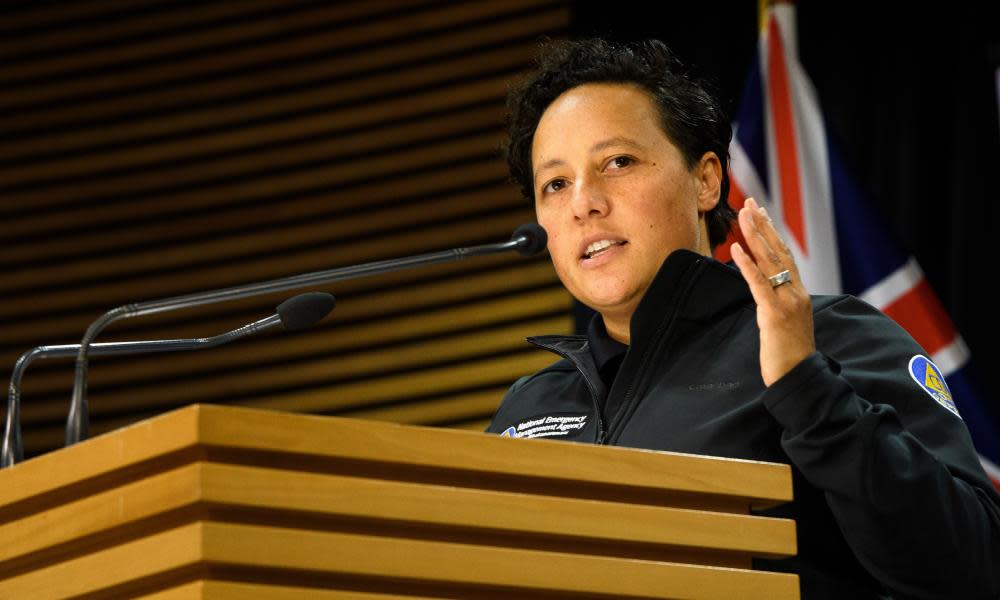New Zealand minister’s cervical cancer diagnosis prompts calls for better screening

Women’s health advocates in New Zealand are calling for the government to improve the country’s cervical cancer screening programme following minister Kiritapu Allan’s shock diagnosis.
Allan, the 37-year-old minister for conservation and civil defence, shared that she had stage-three cancer in a Facebook post on Tuesday, in which she wrote that she had felt uncomfortable about the invasive screening test.
Experts and campaigners are now renewing a push for the government to introduce self-testing for the Human Papillomavirus (HPV), which causes almost all cervical cancer, as another path to regular screening.
Related: New Zealand minister Kiri Allan to take medical leave after cervical cancer diagnosis
HPV self-testing was shown to be as effective as clinician testing in 2019, and has already been made available in Australia and the Netherlands, while the NHS began a pilot of 31,000 women in the UK in February this year. But calls for it to be introduced in New Zealand have so far been unsuccessful, despite support from the ministry of health.
The same goes for amending testing pathways to look first for the presence of the HPV virus, which modelling has shown to reduce deaths by 15% compared with cytology (“smear”) screening, and has been adopted as standard in the UK, Australia, the Netherlands and Sweden.
But a plan to amend New Zealand’s national screening register to introduce HPV primary screening was not allocated funding in the 2017 budget, then fell by the wayside with the subsequent change in government from National to Labour.
Bev Lawton, the director of Victoria University of Wellington’s Centre for Women’s Health Research – Te Tātai Hauora o Hine, said New Zealand was “way behind” international best practice in cervical cancer detection, and that experts and campaigners alike were at a loss to explain why.
“We obviously want the government to push the button [on the changes]… We’ve been incredibly baffled about why not – it is a cost-effective test, it will save the government money in the long run … It’s ridiculous that we have this substandard test.”
Māori women in particular were being let down by the current system, with ministry of health data showing that they were 2.5 times more likely to die from cervical cancer than Pākehā women. Māori women are also less likely to attend regular screening.
Anna Adcock, a research fellow at Te Tātai Hauora o Hine, said the reasons most often given by Māori women related to bodily autonomy, such as whakamā (embarrassment, shyness or reticence) or a desire to maintain the tapu of te whare tangata (sacredness of the womb).
Cost and location could also be barriers to testing. “This is about a system that isn’t being delivered in a way that is acceptable to Māori,” said Adcock.
But a study carried out in the Te Tai Tokerau region found nearly 51% of Māori women accepted the HPV self-test when offered it – indicating that a national rollout would rapidly improve screening rates and outcomes, said Adcock. “For Māori, that will have a really big impact.”
The Māori affairs committee had recommended that the government implement HPV self-testing in its report into addressing health inequities last year. The ministry of health has said that it is committed to introducing HPV primary screening and self-testing, but that it needs funding to do so.
Speaking on Radio New Zealand’s Morning Report programme on Tuesday, prime minister Jacinda Ardern did not rule out making the changes, but said the government needed to do more to encourage people to use the existing cervical screening regime.
“We have to overcome a range of barriers that are leading to those perhaps not being part of the screening that is already available,” said Ardern. “This is something that I would be interested in understanding for our experts … We do need to, in every way we can, remove barriers that currently exist for people accessing the screening we already have.”
Already 22,000 New Zealand women, including 3,000 Māori, are awaiting their smear test due to delays caused by Covid in the screening programme last year.
Adcock said that barriers needed to be removed and technologies improved as a matter of urgency, and that it was “aggravating and upsetting” that the changes that experts had long been pushing for had still not been implemented.
“Every year that this drags out, people will be harmed because we’re using a less effective test: it’s less acceptable, less accessible, less equitable. People will die unnecessarily from this preventable disease.”
Lawton said the discussion started by Allan’s diagnosis could prove the impetus for change. “Her bravery, her courage – it will save lives … I feel really bad that this is happening, but this just might be the push that is needed.”
Adcock said she applauded Allan for her bravery in sharing her diagnosis, and encouraging women to get screened – “but I would much prefer it that no one was being harmed, and we didn’t need to talk about it.”

 Yahoo News
Yahoo News 
